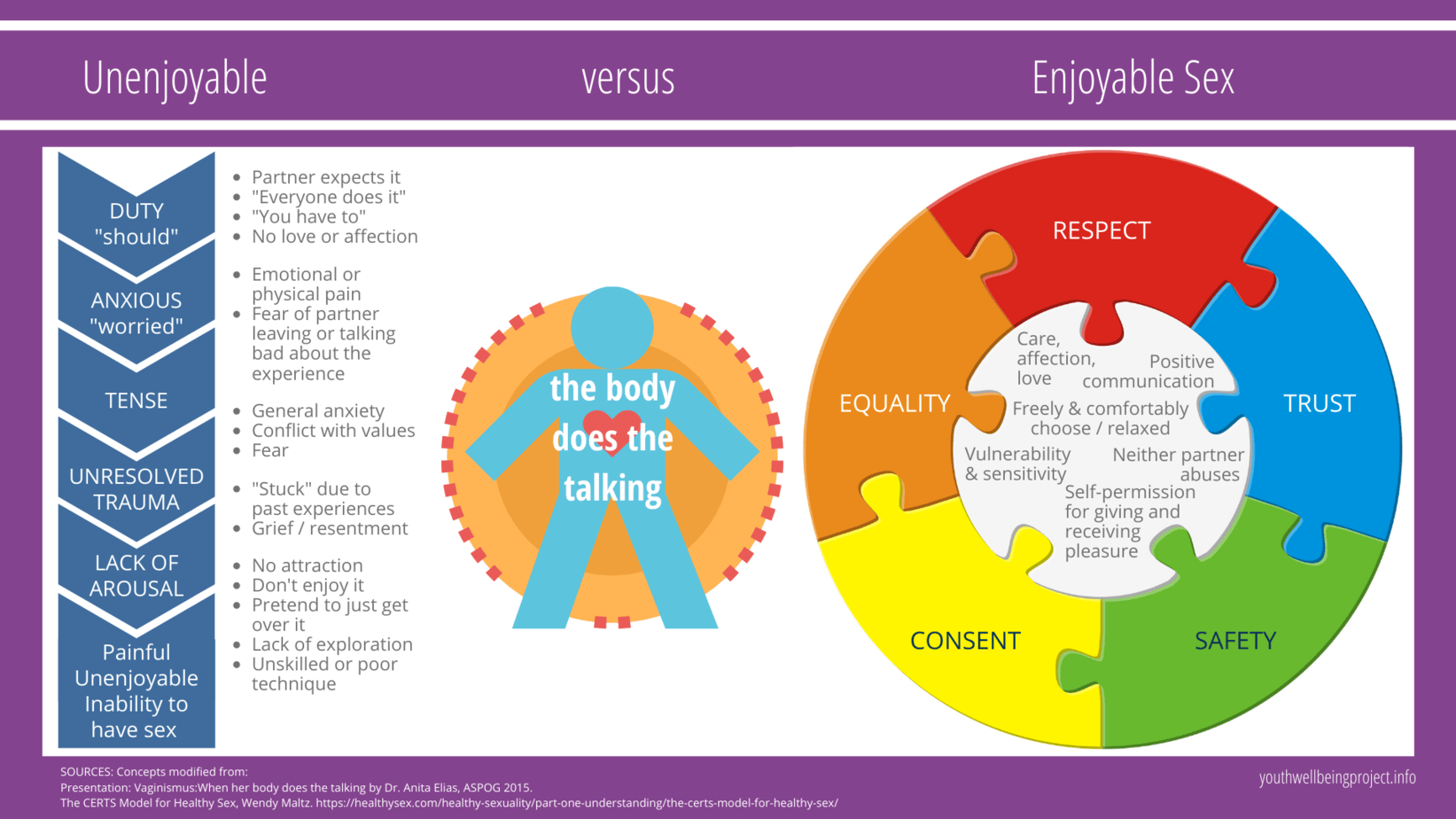Consent has never been a bigger buzz word and increasingly, schools are rushing to ensure they educate students about this vital relationship skill. However, we cannot effectively address consent unless we talk about porn. We are failing young people if we fail to include education about porn’s role in sexual violence, and therefore, how its consumption (and hypersexualised culture in general) impacts consent. The research is clear–porn shapes sexual attitudes, decision-making and behaviours. “Pornography itself is a recipe for rape that has rewritten the sexual script for the sexual behaviour of the millennial generation and is currently rewiring the brains of the generation to follow.”
This journal article is authored by Dr John Foubert, endowed professor of higher education and student affairs, Oklahoma State University, and National President of One in Four.
Make no mistake–unless we tackle porn–along with the other essential elements required for enjoyable sex–conversations about consent and efforts to curb sexual violence will continue to fall short.
The Public Health Harms of Pornography: The Brain, Erectile Dysfunction, and Sexual Violence
I have studied how to end sexual violence for 25 years. It wasn’t until 10 years ago when I came to the realization that the secret ingredient in the recipe for rape was not secret at all, though at the time it was rarely identified. That ingredient, responsible for giving young men the permission-giving beliefs that make rape so much more likely and telling young women they should like it, is today’s high-speed Internet pornography. Pornography itself is a recipe for rape that has rewritten the sexual script for the sexual behaviour of the millennial generation and is currently rewiring the brains of the generation to follow.
The Problem
Today’s Internet porn is nothing like your father’s Playboy magazine. The endless supply of novel images that can be clicked through in seconds have fused the concepts of sex and violence into the developing brains of today’s pre-adolescents, adolescents, and young adults. Research of popular pornography films found that in 88% of the scenes—not just the movies, but the scenes in these movies—there was verbal or physical aggression, usually toward a woman. The more interesting finding is that 95% of the time when someone is violent with another person in porn, usually a man toward a woman, the recipient is shown as either liking that violence or having no objection. Think about how an 11-year-old boy, or girl, would interpret what they see. Pornography teaches boys to hit girls and shows girls that they should like it.
The kind of violence in porn that is now mainstream is enough to shock the conscience of anyone who isn’t currently aroused and thus detached from their prefrontal cortex. Almost half of the pornographic video clips available today online conclude with men, often multiple men, ejaculating on a woman’s face. About half of today’s pornography includes a man inserting his penis in a woman’s rectum and then into her mouth without washing or condoms. Now, acts of oral sex so violent that they lead women to vomit are mainstream.
Despite the fact most of what they are looking at would likely be considered illegal, half of boys have seen hardcore pornography before they become teenagers. Does this viewing impact behaviour? The weight of the scientific evidence offers a convincing response: “Yes.”
The Impact: Rewiring the Brain
Some of the most powerful studies of the brain and pornography come from investigating brain scans. In one experiment, the brains of men were scanned while they viewed porn. When neurologists looked at their brain scans, men’s brains reacted to women as if they were objects, not people. This is important because it is the process of dehumanizing a person that makes violence against them much more acceptable.
In fact, the very maps that nerve cells travel through the brain become rerouted as people use more and more pornography. Digging deeper into this brain phenomenon, a group of neurologists studied more brain scans of people who use pornography. They used an experimental design in order to demonstrate cause and effect. They found that people who use more pornography become less able to wait for gratification than people who use less pornography. Brain studies also now show that increased porn use leads to a slowing down of short-term memory.
The Impact: Sexual Dysfunction
Today’s pornography is having a devastating impact on the sexual health of the Internet generation. For example, rates of erectile dysfunction among young men are skyrocketing, and are directly related to the more frequent use of increasingly interactive Internet pornography. In the 1940’s, less than 1% of men under 30 experienced erectile dysfunction (ED). In 1992, 7% of men under 30 experienced ED. Several recent studies now show that 30% of young men experience ED. In fact, in just the last 10 years, the rate of erectile dysfunction doubled in the U.S. military. If a man’s use reaches the level of addiction, he is 60% more likely to have ED. And all of these men have erectile dysfunction when they are with a person—but not when they are alone with their porn.
The Impact: Sexual Violence
The research connecting pornography and sexual violence is conclusive.
There are over 100 studies showing that pornography use is both correlated with and is the cause (shown through experimental studies) of a wide range of violent behaviours. Over 50 studies show a strong connection between pornography and sexual violence. The results are the same in correlational, cross-sectional, experimental, and longitudinal studies: pornography use and acts of sexual aggression are directly connected.
The more men view pornography, the more they think that women are lesser creatures who they can dominate. Pornography use increases the likelihood that a man will commit sexual violence against a woman, particularly if the man has other risk factors for committing sexual violence like being impulsive, and if his use of pornography is frequent.
Men who believe more strongly in impersonal, promiscuous sex, and are more hostile toward women are more likely to sexually assault a woman if they frequently use pornography. In short, frequent pornography use by itself is not a singular, direct cause for sexual assault. However, if a man has other risk factors for committing sexual violence, for example, hostile masculinity or a preference for impersonal sex, adding frequent pornography use makes it much more likely that he will commit sexual violence.
If anyone has an agenda to end sexual violence— and I hope you do—you must tackle the issue of pornography if you want to have an impact.
The Odds: 1 in 88 Decillion
I’ve told you about many studies. Can the pro-porn folks find a study that supports their assertions? Of course they can. In social science, we function on probabilities. Every once in a while, a study can partly contradict other studies. The point is to go with the weight of the evidence. And when it comes to showing that pornography is connected to sexual violence (i.e., 50 plus studies), what does the weight of the evidence show the odds are that this result could have occurred due to chance?
Those odds are 1 in 88 decillion, 817 nonillion, 841 octillion, 970 septillion, 12 sextillion, 523 quintillion, 233 quadrillion, 890 trillion, 533 billion, 447 million, 265 thousand, six hundred and twenty-five.
How big is that number? Enough to fill one billion Empire State buildings floor to ceiling with pennies. So you can go with the odds equal to finding that one penny in a billion Empire State buildings and pretend that pornography and sexual violence are unrelated, or you can go with the weight of the evidence.
Pornography use has become nearly ubiquitous for men in the United States, for a growing number of women, for a majority of teens, and a growing number of younger people. The lessons they learn from porn shape our culture—the culture we all inhabit. Porn is a devastating harm to the public health of our society. It is time we started treating it as such.

